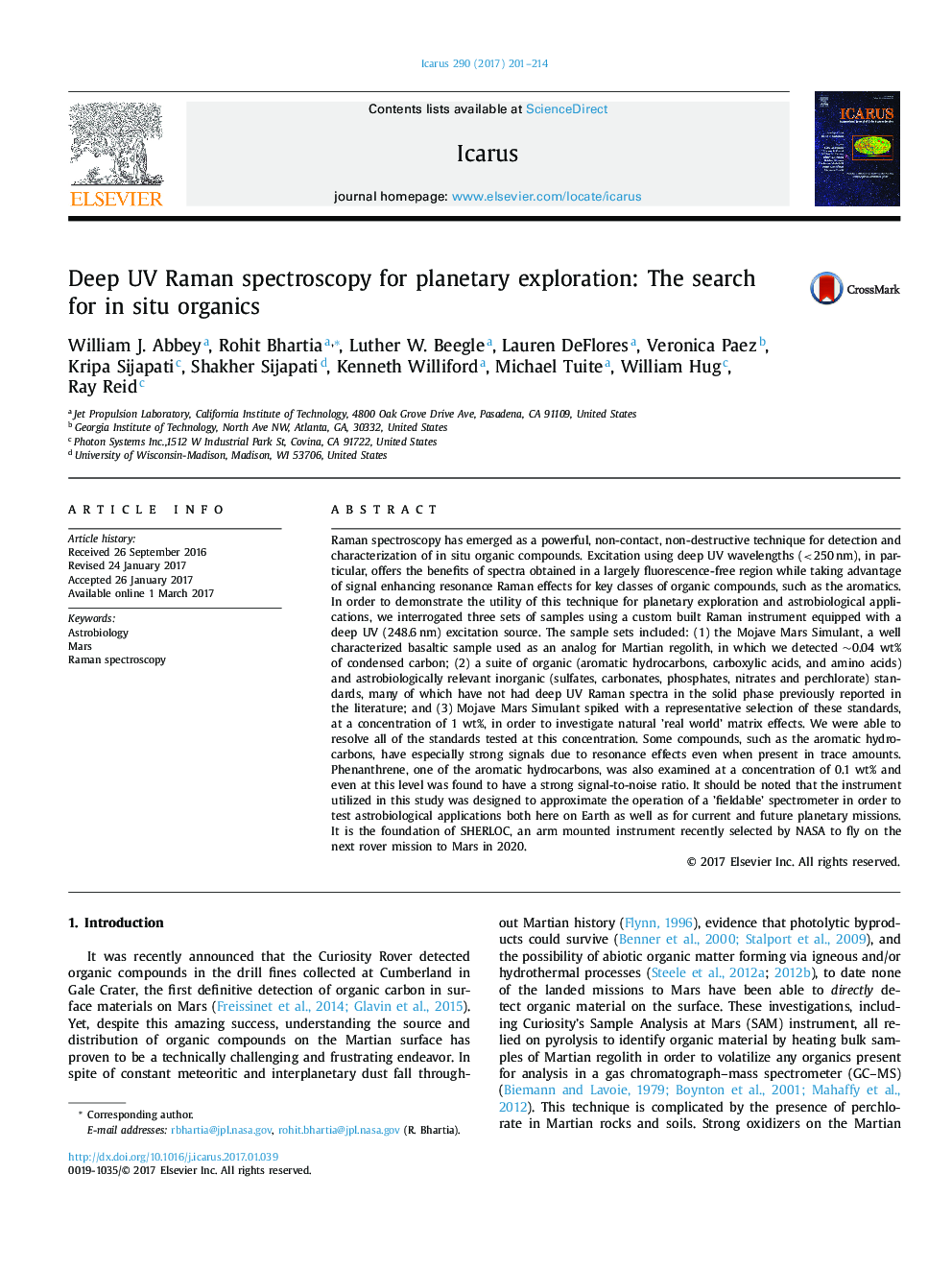| کد مقاله | کد نشریه | سال انتشار | مقاله انگلیسی | نسخه تمام متن |
|---|---|---|---|---|
| 5487044 | 1523501 | 2017 | 14 صفحه PDF | دانلود رایگان |
عنوان انگلیسی مقاله ISI
Deep UV Raman spectroscopy for planetary exploration: The search for in situ organics
دانلود مقاله + سفارش ترجمه
دانلود مقاله ISI انگلیسی
رایگان برای ایرانیان
کلمات کلیدی
موضوعات مرتبط
مهندسی و علوم پایه
علوم زمین و سیارات
علوم فضا و نجوم
پیش نمایش صفحه اول مقاله

چکیده انگلیسی
Raman spectroscopy has emerged as a powerful, non-contact, non-destructive technique for detection and characterization of in situ organic compounds. Excitation using deep UV wavelengths (<â250Â nm), in particular, offers the benefits of spectra obtained in a largely fluorescence-free region while taking advantage of signal enhancing resonance Raman effects for key classes of organic compounds, such as the aromatics. In order to demonstrate the utility of this technique for planetary exploration and astrobiological applications, we interrogated three sets of samples using a custom built Raman instrument equipped with a deep UV (248.6Â nm) excitation source. The sample sets included: (1) the Mojave Mars Simulant, a well characterized basaltic sample used as an analog for Martian regolith, in which we detected â¼0.04 wt% of condensed carbon; (2) a suite of organic (aromatic hydrocarbons, carboxylic acids, and amino acids) and astrobiologically relevant inorganic (sulfates, carbonates, phosphates, nitrates and perchlorate) standards, many of which have not had deep UV Raman spectra in the solid phase previously reported in the literature; and (3) Mojave Mars Simulant spiked with a representative selection of these standards, at a concentration of 1 wt%, in order to investigate natural 'real world' matrix effects. We were able to resolve all of the standards tested at this concentration. Some compounds, such as the aromatic hydrocarbons, have especially strong signals due to resonance effects even when present in trace amounts. Phenanthrene, one of the aromatic hydrocarbons, was also examined at a concentration of 0.1 wt% and even at this level was found to have a strong signal-to-noise ratio. It should be noted that the instrument utilized in this study was designed to approximate the operation of a 'fieldable' spectrometer in order to test astrobiological applications both here on Earth as well as for current and future planetary missions. It is the foundation of SHERLOC, an arm mounted instrument recently selected by NASA to fly on the next rover mission to Mars in 2020.
ناشر
Database: Elsevier - ScienceDirect (ساینس دایرکت)
Journal: Icarus - Volume 290, 1 July 2017, Pages 201-214
Journal: Icarus - Volume 290, 1 July 2017, Pages 201-214
نویسندگان
William J. Abbey, Rohit Bhartia, Luther W. Beegle, Lauren DeFlores, Veronica Paez, Kripa Sijapati, Shakher Sijapati, Kenneth Williford, Michael Tuite, William Hug, Ray Reid,